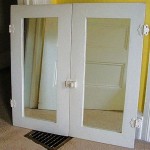How To Mirror PC Screen to TV with HDMI
Mirroring a PC screen to a television via HDMI offers a larger display for various activities, from enjoying multimedia content to delivering presentations. This article provides a comprehensive guide on how to achieve this, covering different operating systems and troubleshooting common issues.
The fundamental requirement is an HDMI cable. These cables transmit both audio and video signals digitally, offering high-quality output. Ensure the cable is compatible with the HDMI ports on both the PC and the television. Different HDMI versions exist, but backward compatibility is generally assured. However, using a cable that matches the latest version on both devices ensures optimal performance.
Locating the HDMI port on both devices is the next step. On a PC, the HDMI port is typically located on the graphics card output panel, often at the rear of the desktop tower or on the side of a laptop. Modern televisions usually have multiple HDMI ports, often labeled HDMI 1, HDMI 2, etc., typically on the back or side panel.
With both devices powered off, connect the HDMI cable securely to the HDMI port on the PC and to an available HDMI port on the television. Once connected, power on both the television and the PC. The television needs to be set to the correct input source. Using the television's remote control, navigate to the input or source menu and select the HDMI port corresponding to the one connected to the PC. The input label might correspond to the HDMI port number (e.g., HDMI 1, HDMI 2).
The procedures for configuring the display output on the PC vary depending on the operating system. For Windows 10 and 11, pressing the Windows key + P will open the Project menu. This menu offers several display options: "PC screen only," "Duplicate," "Extend," and "Second screen only." "Duplicate" mirrors the PC screen exactly on the television. "Extend" uses the television as an additional display, expanding the desktop. "Second screen only" displays the output only on the television and disables the PC's built-in display. "PC screen only" disables the external display.
macOS users can configure the display settings by navigating to System Preferences and selecting Displays. Within the Displays settings, users can choose to mirror the display or extend the desktop to the connected television. Ensure the "Mirror Displays" checkbox is selected to duplicate the content on both screens. Resolution and refresh rate can also be adjusted in this menu to optimize the display output for the television.
For Linux distributions, the process can vary slightly depending on the desktop environment. However, most distributions provide display settings accessible through the system settings menu. Look for options like "Displays" or "Screen Resolution." Similar to other operating systems, options to mirror, extend, or use only the external display are typically available.
Sometimes, the connection might not work immediately. Checking the cable connections is the first troubleshooting step. Ensure both ends of the HDMI cable are firmly plugged into their respective ports. Trying a different HDMI cable can rule out cable malfunction as the source of the problem. If the problem persists, restarting both the PC and the television can often resolve minor software glitches that may be interfering with the connection.
If the image doesn't appear or appears distorted, adjusting the resolution settings on the PC can be helpful. Lowering the resolution output to match the television's native resolution often solves display issues. Accessing the display settings within the operating system (as described previously for different operating systems) allows adjustments to the resolution.
Updating graphics drivers is another crucial step in troubleshooting. Outdated or corrupted graphics drivers can cause compatibility issues with the HDMI connection. Visit the website of the graphics card manufacturer (e.g., NVIDIA, AMD, Intel) to download the latest drivers for the specific graphics card model. Installing these updated drivers can often rectify display problems.
Audio issues can also arise. If the audio is not routed to the television, check the sound settings on the PC. Ensure the television is selected as the default audio output device. This setting is typically found within the sound control panel or settings menu of the operating system. Selecting the correct output device directs the audio signal through the HDMI cable to the television speakers.
If the issue continues, consulting the manuals for both the PC and the television can provide more specific troubleshooting guidance. These manuals often contain detailed information regarding connectivity and troubleshooting specific to the model. Online forums dedicated to specific hardware or operating systems can also be valuable resources for finding solutions to less common connection problems.

How To Screen Mirror Stream Laptop Pc Tv Wireless No Adapters
How To Duplicate Your Pc S Screen On A Tv With Hdmi Support Com Techsolutions

Sony Bravia Tv How To Display Pc Screen On With Hdmi Mirroring

Screen Mirroring A Phone Ipad Or Laptop To Tv How Push Your The Big

How To Connect Your Pc A Tv Wirelessly 3 Easy Tricks
How To Display Your Computer Screen On Tv Via Hdmi Sony

How To Connect Mirror Laptop Screen On Any Smart Tv Wirelessly No App

Connecting Laptop To The Tv With Just A Few Simple Steps Resource Centre By Reliance Digital

How To Connect Your Pc A Tv Wirelessly 3 Easy Tricks

How To Use Your Tv As A Second Monitor For Computer








